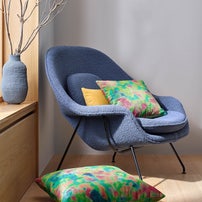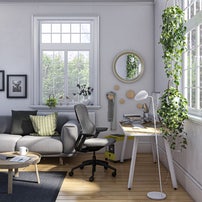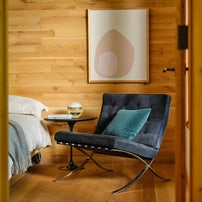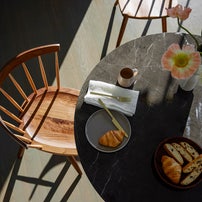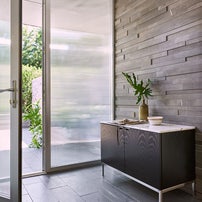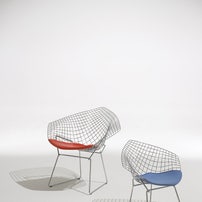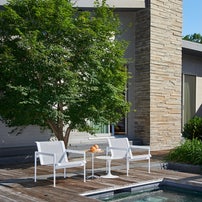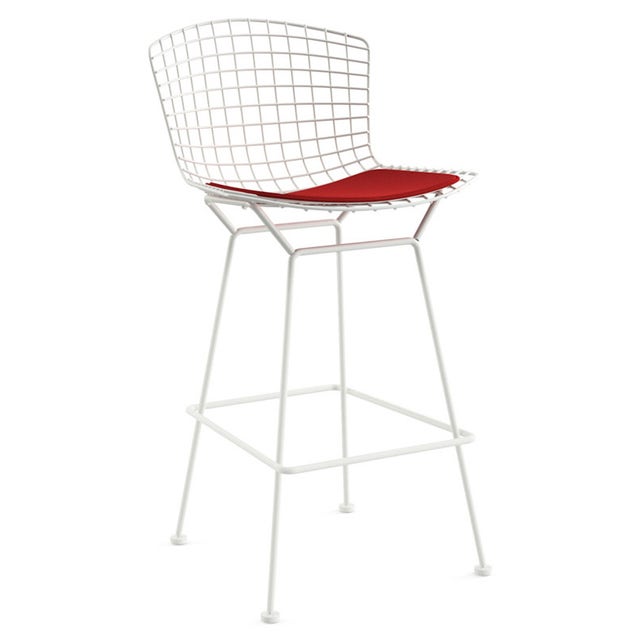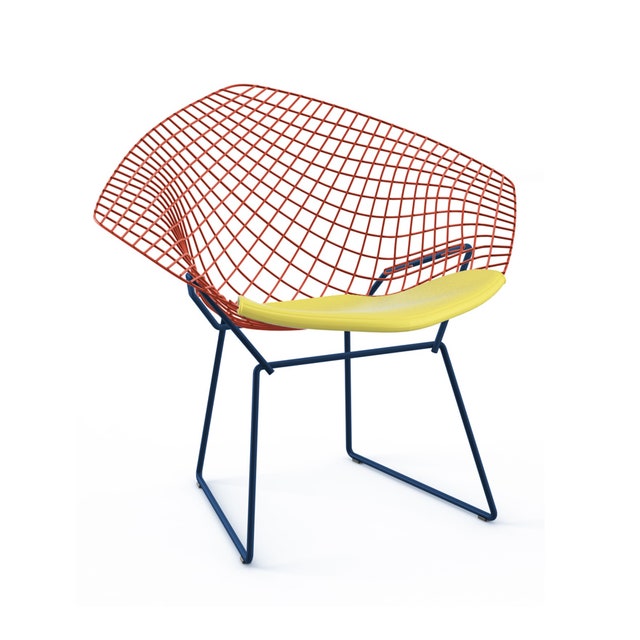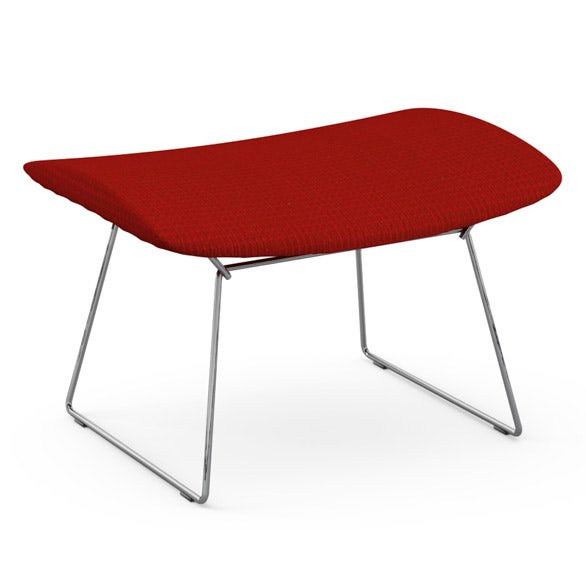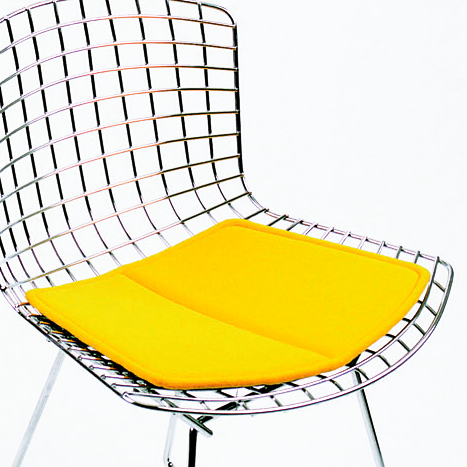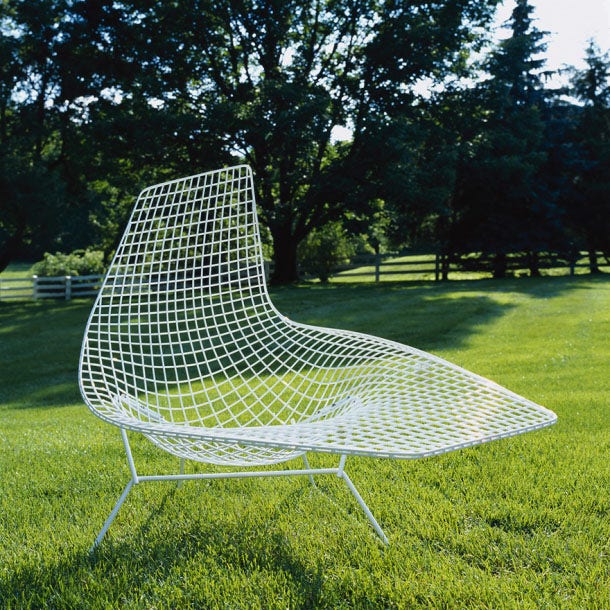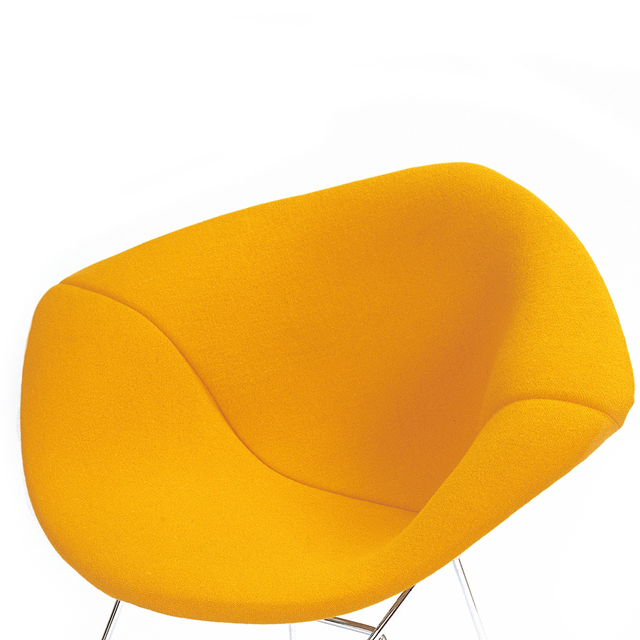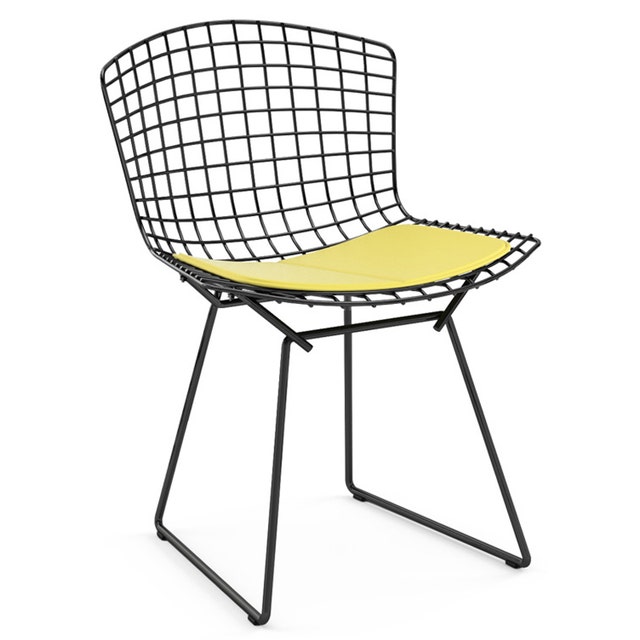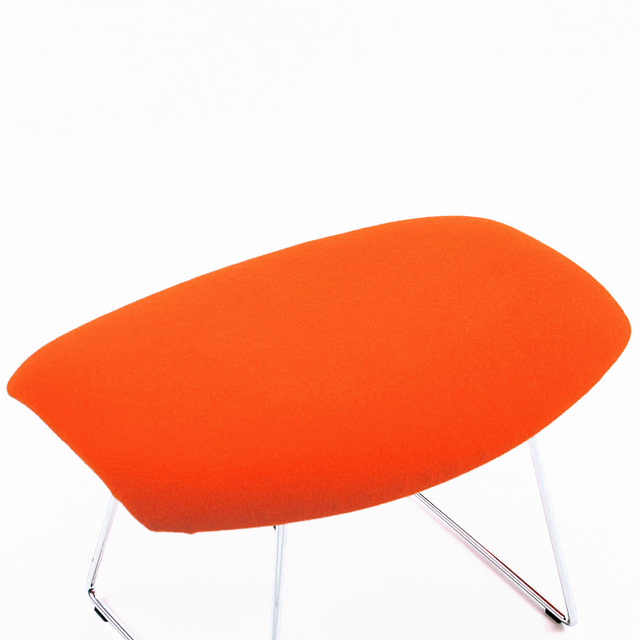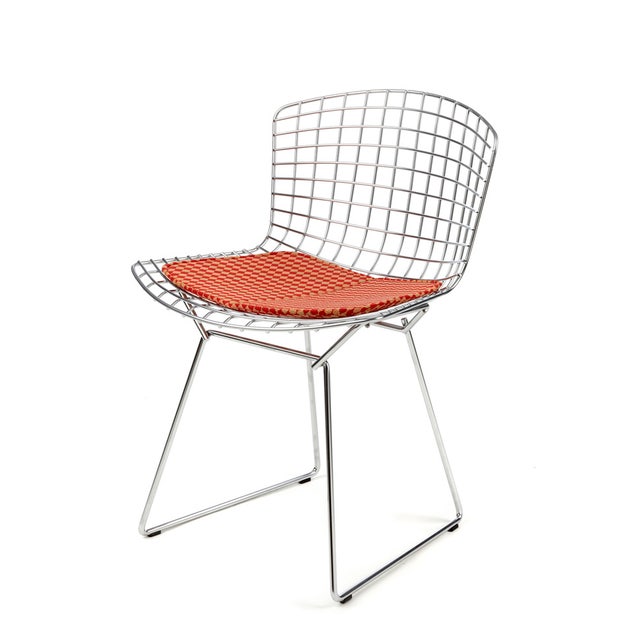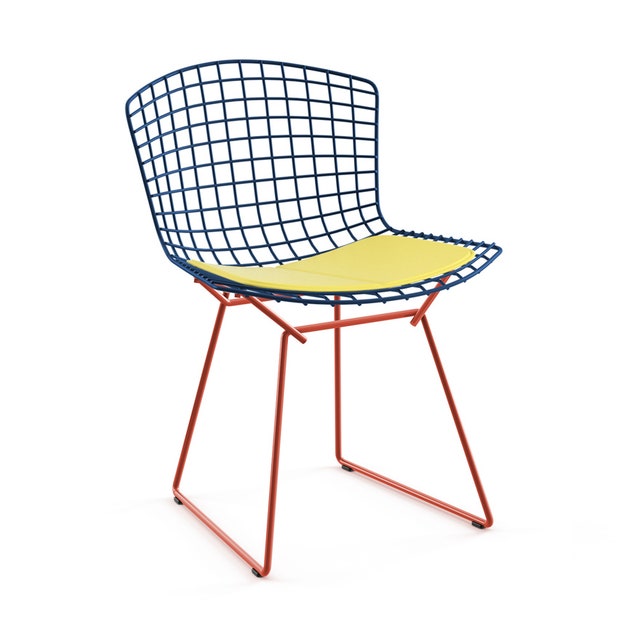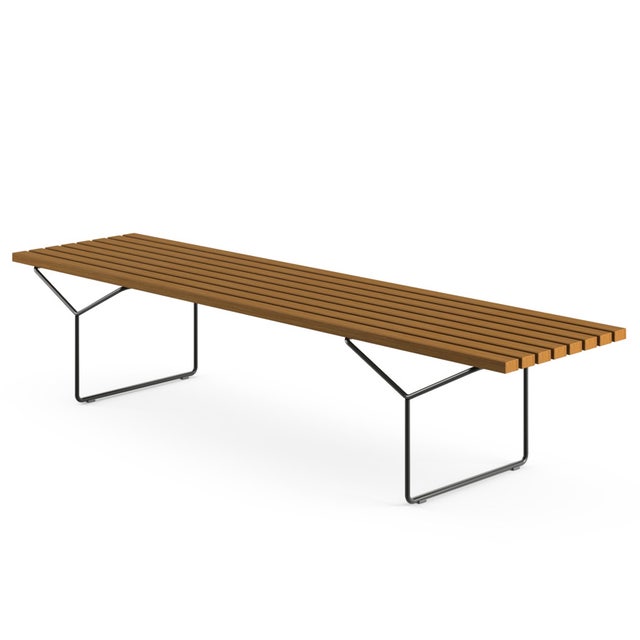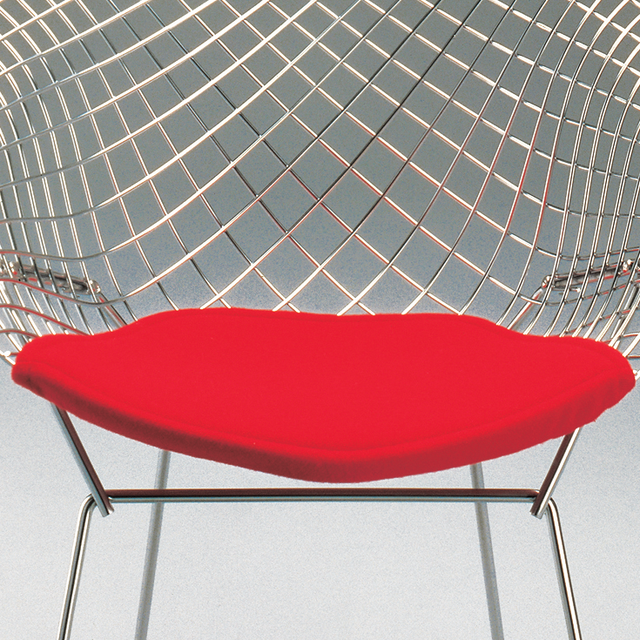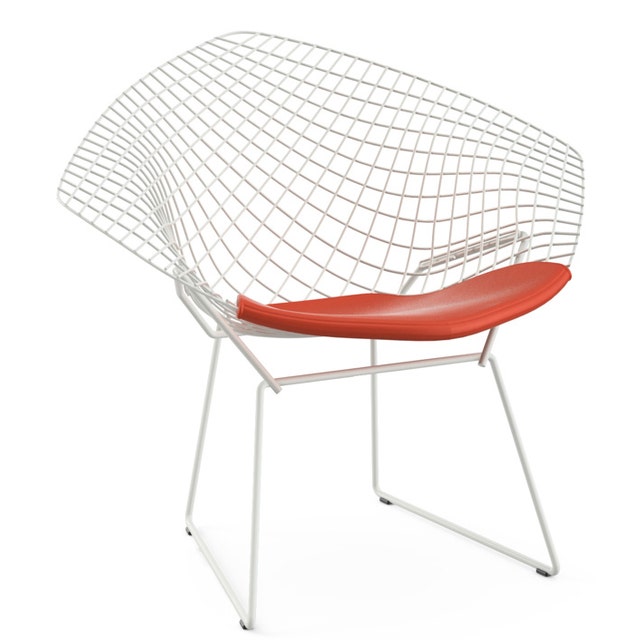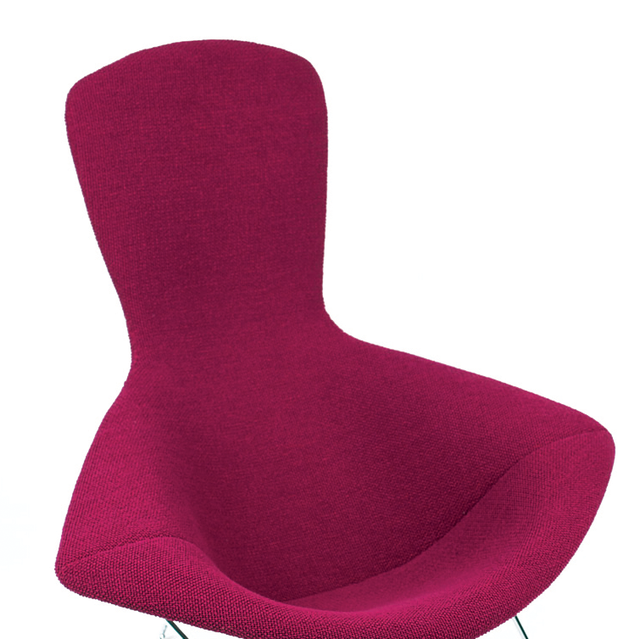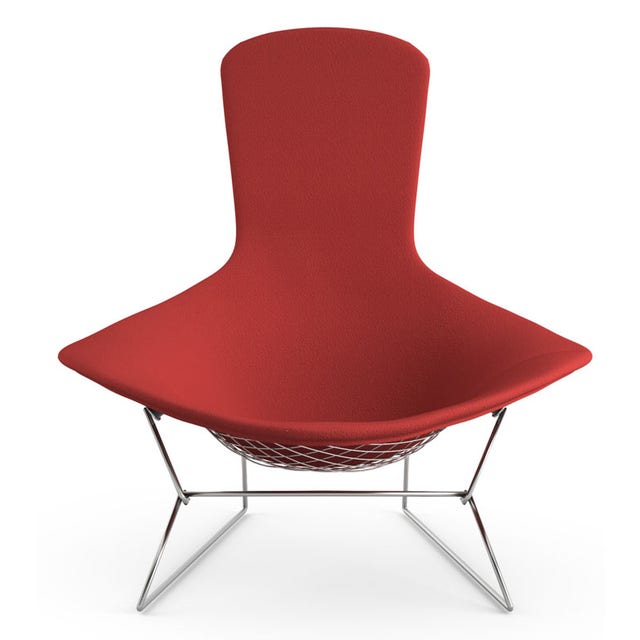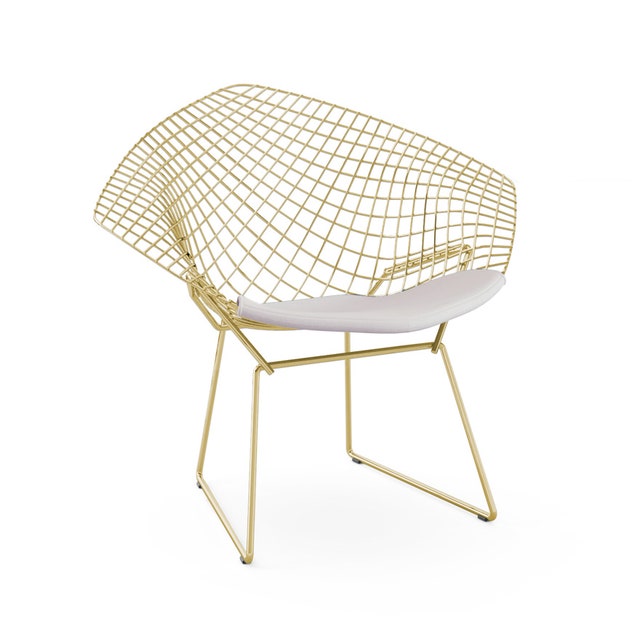Knoll Harry Bertoia Large Diamond™ Lounge Chair
Characteristic of the early environment at Knoll, Hans and Florence never demanded that Bertoia design furniture, but instead encouraged him to explore whatever he liked. They simply asked that if he arrived at something interesting, to show them. Bertoia later explained the process.
“I went around and discovered, quite soon, that I was not the man to do research. My feeling was that had to come from an inward direction. I began to rely once more on my own body. I began to think in terms of what I would like as a chair. It started very slowly…I came into rod or wire, whether bent of straight. I seemed to find myself at home. It was logical to make an attempt utilizing the wire.
"Once more, I went through the procedure of positioning, considering the possibility of shapes, then relating, of course, what the wire itself could be, what shapes it might take, whether there were any tools to do it with. There are many aspects of the same things coming into one’s mind, but the very first thing was whether a shape would come up that would begin to serve as a chair, sitting on it, etc. One was taking the shape of a side chair; another was beginning to extend to care of the head. This developed to the point where something could be held on to…You know, when you have something in front of you that can really physically be held, it becomes easier to make changes."
The Diamond Chair is an astounding study in space, form and function by one of the master sculptors of the last century. Like Saarinen and Mies, Bertoia found sublime grace in an industrial material, elevating it beyond its normal utility into a work of art. Harry Bertoia’s wire chairs are among the most recognized achievements of mid-century modern design and a proud part of the Knoll heritage.
MEASUREMENTS:
- Height: 71.6 cm / 28.2 inch
- Seat Height: 38.6 cm / 15.2 inch
- Width: 114.3 cm / 45 inch
- Depth: 80 cm / 31.5 inch
MATERIALS:
- Seat and base are constructed of welded steel rods with polished chrome
HELPFUL NOTES:
- Plastic glides included on sled base to protect floors
- Outdoor use: With proper care and limited exposure to the elements, the Bertoia Collection is appropriate for outdoor environments. Specify outdoor powder coat (red, yellow, green, blue, black, white). Consult us for appropriate upholstery options
- Cover attaches directly to the frame with hidden mono-filament and metal hooks
- Greenguard Indoor Air Quality Certified®

Harry Bertoia
Italy, 1915 - 1978
Harry Bertoia was born in Udine, Italy, in 1915. When he was fifteen he moved with his family to Canada and then on to Michigan. In 1939 he was awarded a scholarship to the Cranbrook Academy of Art in Michigan, which had been founded by Eliel Saarinen in 1932. He began to teach there, establishing a workshop for metalwork. At Cranbrook, Harry Bertoia met Charles Eames and in 1943 Bertoia went to California, where he worked briefly with Charles and Ray Eames for the Evans Product Company, designing furniture made of bent laminated wood.
In the 1940s Harry Bertoia concentrated entirely on furniture making and in 1950 he founded a business of his own in Bally, Pennsylvania. 1950 also was the beginning of Harry Bertoia’s collaboration with Florence and Hans Knoll, whose acquaintance he had also made at Cranbrook Academy. Harry Bertoia’s first chair design for Knoll, the Model 420 Diamond, 1950-1952, featuring molded mesh of chromium-plated steel wire, was an immediate best seller.
While he only designed one series of furniture, Bertoia continued to be involved in the Knoll story by providing sculptures and architectural installations for projects. He designed an altar for the MIT Chapel, designed by Eero Saarinen. Bertoia spent the next 25 years of his life experimenting with light, sound and volume through sculptures, paintings and architectural installations.
Today Knoll carries on Harry Bertoia’s legacy of innovation, inspiration, and beauty with the Bertoia collection, which has been in continuous production around the world since its introduction. In 2005 Knoll introduced the Asymmetric Lounge, a design from Bertoia’s initial experimentation that had never reached production.

Knoll has lived their guiding principle, "good design is good business," since 1938. Products are all created to inspire, fit, and last. The Bauhaus philosophy that furniture should complement, not compete with architecture, is central to Knoll’s design. Its extensive portfolio includes office work systems, residential mid-century modern classics, textiles, and accessories.
Designers like Harry Bertoia, Eero Saarinen, Warren Platner, Isamu Noguchi, and Florence Knoll contributed to Knoll’s iconic designs. Knoll invests in research and field studies and explores organizational behavior and technology to ensure quality excellence. As a leader in sustainability, Knoll’s practices reduce waste and conserve resources. Based in Pennsylvania, Knoll has a strong international presence, and 40 products are in the permanent collection of the Museum of Modern Art in New York.
Knoll products incur a 7.5% shipping charge at checkout, with a minimum of $85 and maximum of $500. This fee reflects White Glove Delivery for large items, which includes bringing the item to your room of choice, unpacking, removal of packaging, and assembly.
For further information on our shipping policies click here.
For further information on returns + refunds click here.


